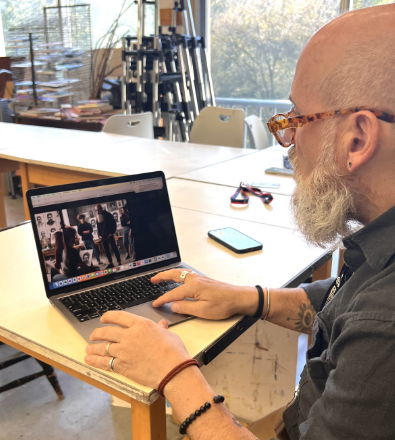AI image generators are among the most promising innovative technologies of this generation, but that does not stop controversies over how these images may be used—especially regarding AI-generated artwork.
According to AIPRN, the AI art industry is projected to grow 254% between 2022 and 2030
Image generators powered by artificial intelligence create original works from text prompts. Programs such as Dall-E, Midjourney, and Ideography use photos and illustrations from across the internet to generate the images they output.
The Guardian states that programs that utilize artificial intelligence to create images have been used to create anything from magazine covers to viral memes, and photorealistic images to abstract artworks. Even people with little exposure to producing graphic designs can manipulate these programs to produce eye-catching images. However, there are debates about where AI images should or should not be used.
“I guess I’d like to say that AI art shouldn’t be used anywhere,” Edie Leon ‘26 said. “But maybe there are some exceptions.”
“I think that it’s probably okay for them to be used in just about any situation,” Upper School Visual Arts Teacher David Love said. “As long as they’re clearly noted as being used by the technology.”
However, many artists are infuriated by their new AI rivals because these generators are trained off licensed works across the internet to create their images. This means that these programs can steal an artist’s distinct style and iconic imagery without consent or compensation.
Anyone could type a prompt such as “Give me a Keith Haring barking dog on a Van Gogh-style background,” and the program will spout your picture, discrediting the artists that the image stemmed from.
“Well, obviously one of the really big problems with this is that artists are losing some control over their artwork and financial kind of control of it, and how it is used in different ways,” Mr. Love said.
According to CNN, more controversy over this developing technology arose when Jason M. Allen won the Colorado State Fair Fine Arts Competition’s “digital arts/digitally manipulated photography” category with an AI-generated piece. Many people were enraged by the win, claiming that a computer program should not be allowed to compete with human creatives and that it should be illegal for award-winning artworks to be trained from licensed images.
In addition, this win also raises questions about whether AI-generated images are legitimate artwork.
“I would consider art something that’s human-made, and it’s not,” Leon said.
“Even traditional artworks borrow from centuries of art-making before. So in some ways, that’s what AI is doing.” Mr. Love said. “It’s taking everything that’s out there, everything that it knows about art, to create something. But I’m not sure that it should be.”
This easy-to-use software also elicits many anxieties for people in the art industry. Although AI image generators are not yet refined enough to replace graphic designers, that does not mean this will never happen. In addition, AI image generators could replace other visual artists.
“I think something that’s really special about human-created art is that you can kind of see the personality in it,” Leon said. “Like some more personal aspects that AI can’t really depict.”
At the very least, this technology is replacing how the industry functions, giving graphic designers an extra tool to become more efficient and productive to produce their vision.
“I think the more different possibilities that you explore through the idea generation process, the better the final work will be. But as you know, it’s really important too that you don’t jump to using technology before you have the skills to really do that kind of work,” Mr. Love said. “And that’s the danger of AI, is that people are jumping ahead and skipping over some really important concepts that they should learn how to do.”
Although many broader conflicts are happening across the nation, these new AI programs could also affect the students at GA and its art program.
“I think they should be exposed to this, yes, because there are some purposes that it will be advantageous, and they will in some ways, be kind of competing against them, especially in commercial kinds of fields,” Mr. Love said. “And so they should be aware of the kind of work that it does create, so they can make better work than that work, and more original work and more real work.”
The government is constantly setting new precedents for how these AI image generators may be used. For example, the governor of California recently signed a bill that requires all AI-generated images on major social media sites to be marked or removed to terminate the spread of misinformation through these pictures.
Many disputes have yet to be settled on whether images generated by artificial intelligence may use licensed pictures to train themselves, what these images may be used for, and if anyone can claim full ownership of such images. The art industry is full of blurry lines in the field of artificial intelligence, and many people are on the edge of their seats as they watch the art industry evolve.

